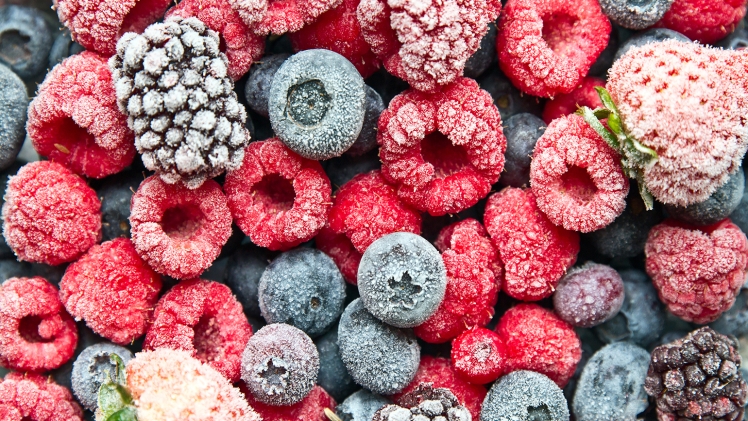A large number of microorganisms have been reported by many investigators to grow at and below 0◦C. In addition to factors inherent within these organisms, their growth at and below freezing temperatures is dependent on nutrient content, pH, and the availability of liquid water. The aw of foods may be expected to decrease as temperatures fall below the freezing point.
For water at 0◦C, aw is 1.0 but falls to about 0.8 at −20◦C and to 0.62 at about −50◦C. Organisms that grow at subfreezing temperatures, then, must be able to grow at the reduced aw levels, unless aw is favorably affected by food constituents with respect to microbial growth. In fruit juice concentrates, which contain comparatively high levels of sugars, these compounds tend to maintain aw at levels higher than would be expected in pure water, thereby making microbial growth possible even at subfreezing temperatures.
The same type of effect can be achieved by the addition of glycerol to culture media. Not all foods freeze at the same initial point (Table 16–4). The initial freezing point of a given food is due in large part to the nature of its solute constituents and the relative concentration of those that have freezing-point depressing properties.
Although the metabolic activities of all microorganisms can be stopped at freezer temperatures, frozen foods may not be kept indefinitely if the thawed product is to retain the original flavor and texture. Most frozen foods are assigned a freezer life.
The suggested maximum holding time for frozen foods is not based on the microbiology of such foods but on such factors as texture, flavor, tenderness, color, and overall nutritional quality upon thawing, and subsequent cooking.
Lastly
Some foods that are improperly wrapped during freezer storage undergo freezer burn, characterized by a browning of light-colored foods such as the skin of chicken meat.The browning results from the loss of moisture at the surface, leaving the product more porous than the original at the affected site. The condition is irreversible and is known to affect certain fruits, poultry, meats, and fish, both raw and cooked.

